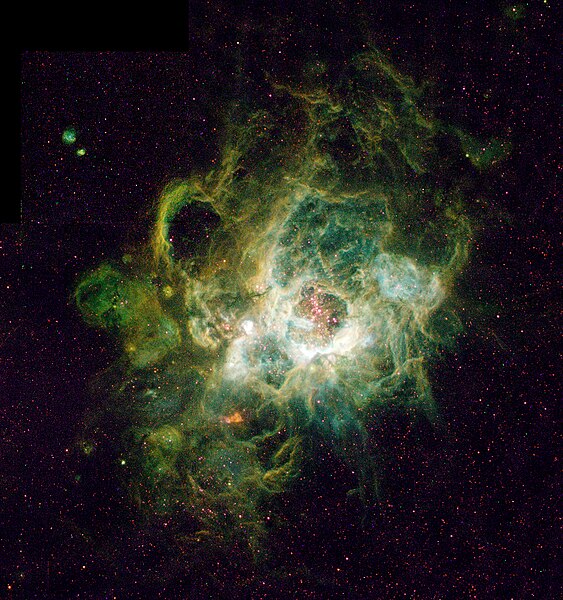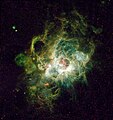Dencukaay:Nursery of New Stars - GPN-2000-000972.jpg

Dayoob bii wonendi: 563 × 600 pixel. Yeneen ñawaay: 225 × 240 pixel • 450 × 480 pixel • 721 × 768 pixel • 1 127 × 1 201 pixel.
réyal nataal bi ((1 127 × 1 201 pixels, réyaayu file bi : 2,42 Mio, type MIME : image/jpeg))
Jaar-jaaru dencukaay bi
Cuqal cib taariix/waxtu ngir gis ni dencukaay bi meloon ca jamono jooju.
| Taariix ak Waxtu | Tuutal | Dayoo | Jëfandikukat | Saraa | |
|---|---|---|---|---|---|
| teew | 8 Ut 2019 à 18:12 |  | 1 127 × 1 201 (2,42 Mio) | BevinKacon | Reverted to version as of 01:11, 9 April 2009 (UTC) bad upscale by new user |
| 3 Ut 2019 à 13:38 |  | 1 690 × 1 800 (2,84 Mio) | Armin3636 | بالا بردن کیفیت | |
| 29 Sulet 2019 à 12:08 |  | 1 024 × 1 091 (1,21 Mio) | Armin3636 | بارگذاری کامل پرونده | |
| 9 Awril 2009 à 01:11 |  | 1 127 × 1 201 (2,42 Mio) | BotMultichillT | {{Information |Description={{en|1=This is a Hubble Space Telescope image (right) of a vast nebula called NGC 604, which lies in the neighboring spiral galaxy M33, located 2.7 million light-years away in the constellation Triangulum. This is a site where |
Xët yi am wii ŋara
Xët wii ci suuf ëmb na wii ŋara
Fépp fees jëfandikoo dencukaay bi
Yeneen wiki yiy toftal dañuy jëfandikoo itam bii dencukaay:
- Jëfandikoo nañu ko ci af.wikipedia.org
- Jëfandikoo nañu ko ci anp.wikipedia.org
- Jëfandikoo nañu ko ci an.wikipedia.org
- Jëfandikoo nañu ko ci ar.wikipedia.org
- Jëfandikoo nañu ko ci arz.wikipedia.org
- Jëfandikoo nañu ko ci ast.wikipedia.org
- Jëfandikoo nañu ko ci az.wikipedia.org
- Jëfandikoo nañu ko ci ba.wikipedia.org
- Jëfandikoo nañu ko ci be.wikipedia.org
- Jëfandikoo nañu ko ci bg.wikipedia.org
- Jëfandikoo nañu ko ci bn.wikipedia.org
- Jëfandikoo nañu ko ci bs.wikipedia.org
- Jëfandikoo nañu ko ci ca.wikipedia.org
- Jëfandikoo nañu ko ci ceb.wikipedia.org
- Jëfandikoo nañu ko ci ce.wikipedia.org
- Jëfandikoo nañu ko ci cs.wikipedia.org
- Jëfandikoo nañu ko ci da.wikipedia.org
- Jëfandikoo nañu ko ci de.wikipedia.org
- Jëfandikoo nañu ko ci de.wikibooks.org
- Jëfandikoo nañu ko ci diq.wikipedia.org
- Jëfandikoo nañu ko ci el.wikipedia.org
Wone njëfandikoo gu daj gu bii dencukaay.

